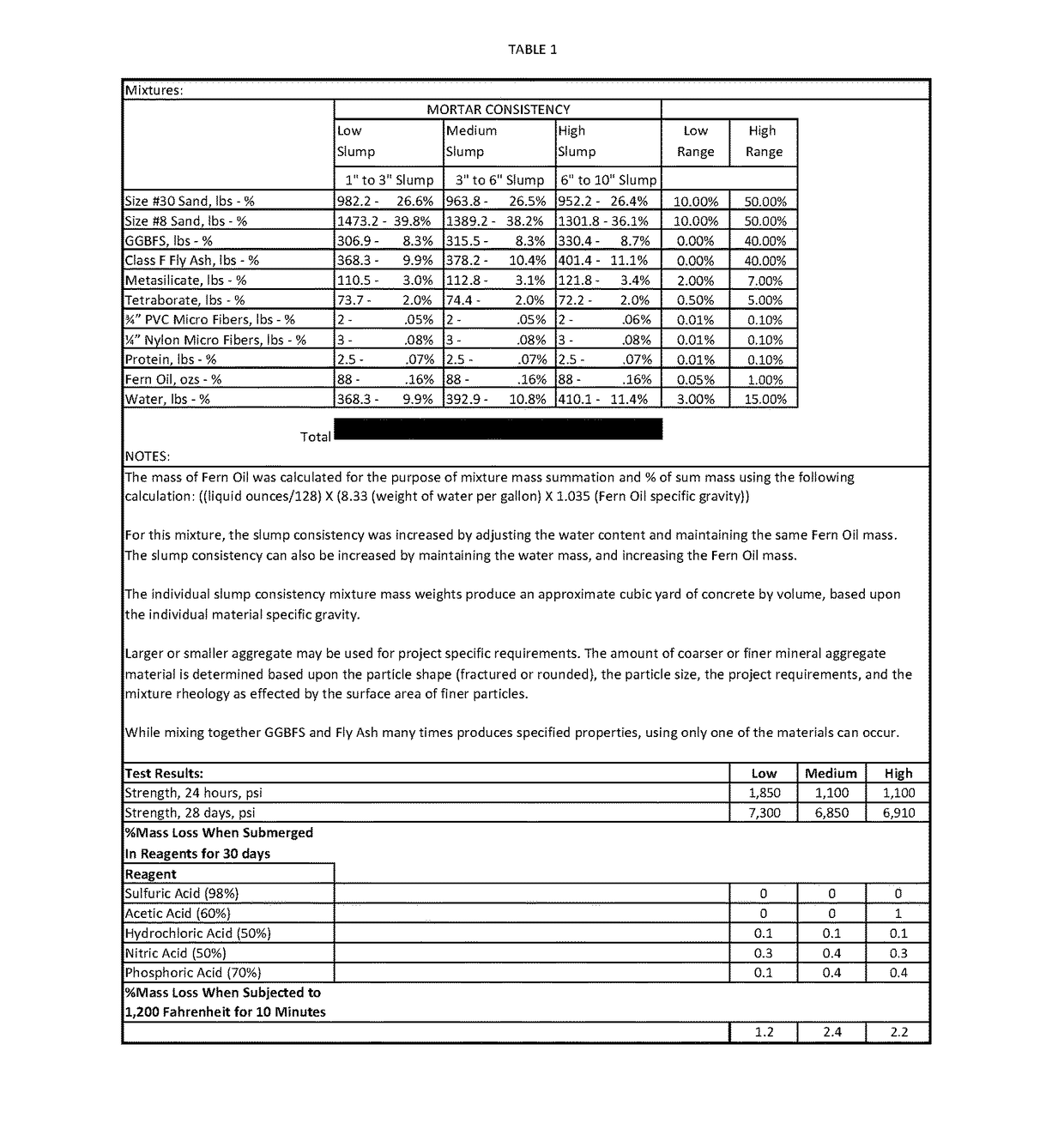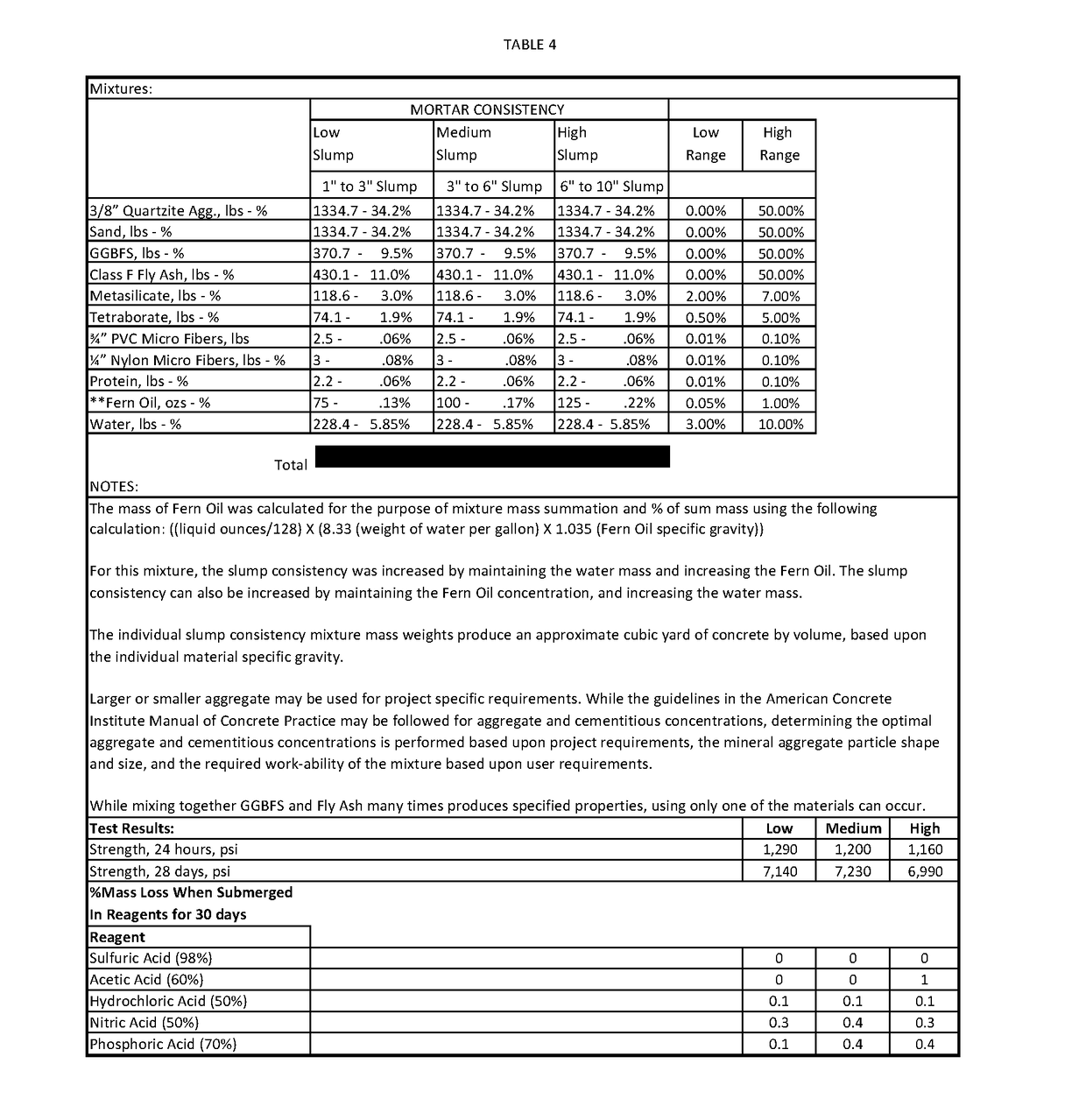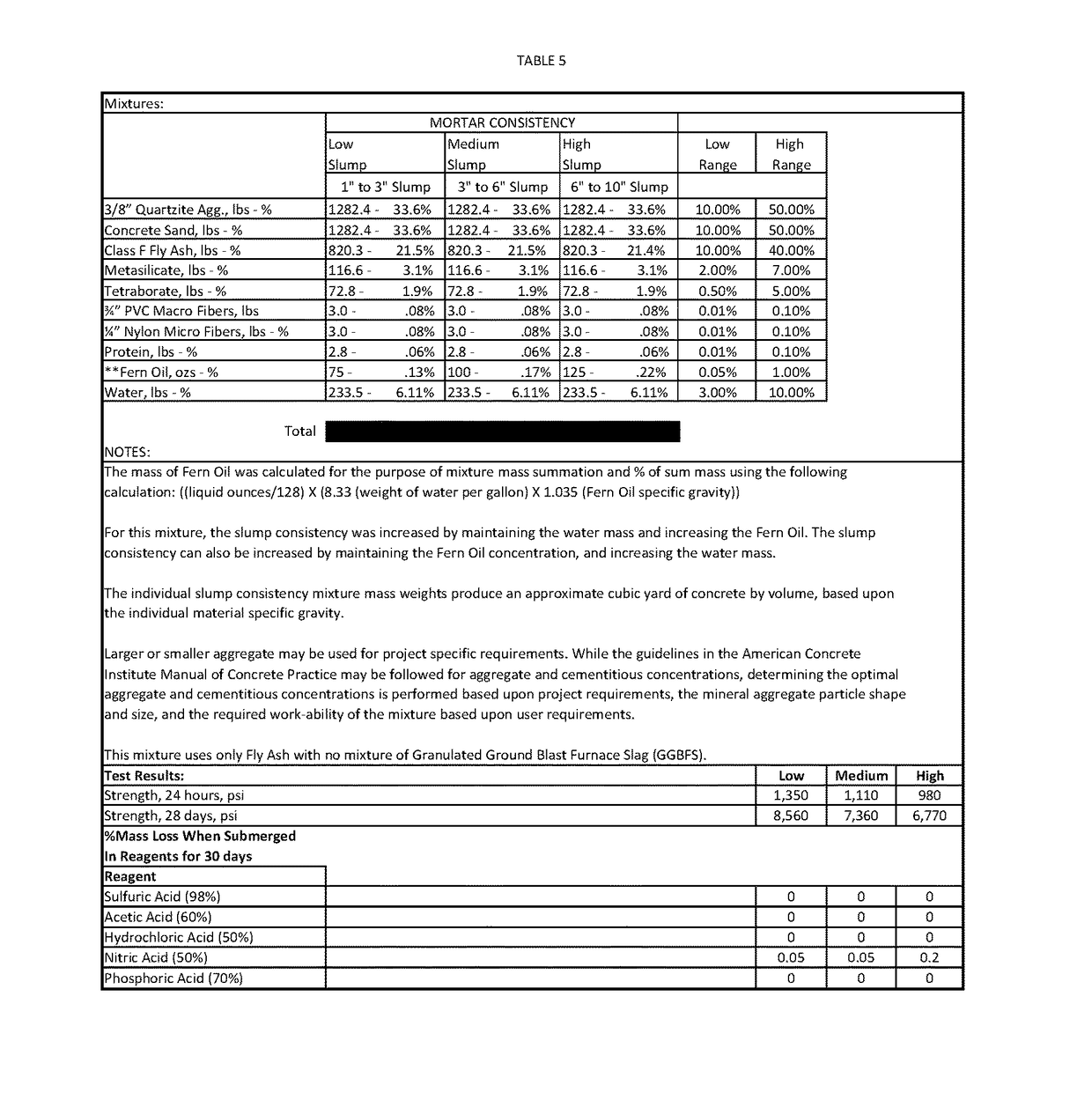Cold fusion concrete
a technology of which is applied in the field of concrete materials, can solve the problems of f-fly ash producing lower quality alkali activated cement systems, and none of the prior art references teach cold fusion concrete and cement, and achieve the effect of low quality
- Summary
- Abstract
- Description
- Claims
- Application Information
AI Technical Summary
Benefits of technology
Problems solved by technology
Method used
Image
Examples
example 1
[0058]In order to produce a sand and cementitious material that can be trowel applied, or poured into place, that is resistant to acids, sulfates, chlorides, and heat exposure up to 1,200 degrees Fahrenheit, reagent resistant mineral aggregate such as, but not limited to high silicon dioxide content alluvial quartzite deposits, mined basalt, or mined marble with maximum aggregate sizes of from about ¼-inch to #200 U.S. Mesh sieve (0.0029″ or 74 μm) are combined to ratios which create a smooth textured finish, and accommodate a maximum layer thickness to aggregate size ratio of about 3 to 1. The combination will result in a not more than 35% deviation from the maximum density line when examined on an X / Y graph and plotted with the % passing raised to the 0.45 power, densifying the gradation of aggregate to its maximum. The combined aggregate should be, in terms of mass, about 20% (wt / wt) to 75% (wt / wt) of the final cementitious mixture mass including water. Pollinated Fern Oil is add...
example 2
[0061]In order to produce a sand, aggregate, and cementitious material that can be trowel applied, or poured into place that is resistant to acids, sulfates, chlorides, and short term (up to approximately 10 minutes) heat exposure up to 2,400 degrees Fahrenheit, reagent resistant materials such as, but not limited to cenospheres, expanded glass, vermiculite, expanded shale, volcanic cinders, entrained air, and other void producing and lightweight filler materials are combined to ratios which create a cementitious mass, and accommodate a maximum layer thickness to aggregate size ratio of about 3 to 1. The combination will result in a maximum 35% deviation from the maximum density line when examined on an X / Y graph and plotted with the % passing raised to the 0.45 power, densifying the gradation of aggregate to its maximum. The combined aggregate should be, in terms of mass, from about 5.0% (wt / wt) to about 40% (wt / wt) of the final cementitious mixture mass including water. Pollinated...
example 3
[0064]In order to produce a cementitious mortar material that can be trowel applied, or poured into place that is resistant to various acids but specifically hydrofluoric acid. The cementitious materials should include, either singly or combined, at least one of fly ash (Class C or Class F), and Granulated Ground Blast Furnace Slag (GGBFS) added in variable concentrations dependent upon mixture strength, volume change, carbonation, and rheological behavior to mass concentrations ranging to a maximum of 65% (wt / wt), typically about 10% (wt / wt) to about 65% (wt / wt). Each of the fly ash concentrations and Granulated Ground Blast Furnace Slag (GGBFS) concentrations of the mixture should be selected by balancing mass and volume amounts of each in mixture designs until characteristics are as specified by project requirements. The cementitious materials should include sodium or potassium metasilicate and / or sodium or potassium metasilicate pentahydrate, added in variable concentrations dep...
PUM
| Property | Measurement | Unit |
|---|---|---|
| Temperature | aaaaa | aaaaa |
| Fraction | aaaaa | aaaaa |
| Fraction | aaaaa | aaaaa |
Abstract
Description
Claims
Application Information
 Login to View More
Login to View More - R&D
- Intellectual Property
- Life Sciences
- Materials
- Tech Scout
- Unparalleled Data Quality
- Higher Quality Content
- 60% Fewer Hallucinations
Browse by: Latest US Patents, China's latest patents, Technical Efficacy Thesaurus, Application Domain, Technology Topic, Popular Technical Reports.
© 2025 PatSnap. All rights reserved.Legal|Privacy policy|Modern Slavery Act Transparency Statement|Sitemap|About US| Contact US: help@patsnap.com



